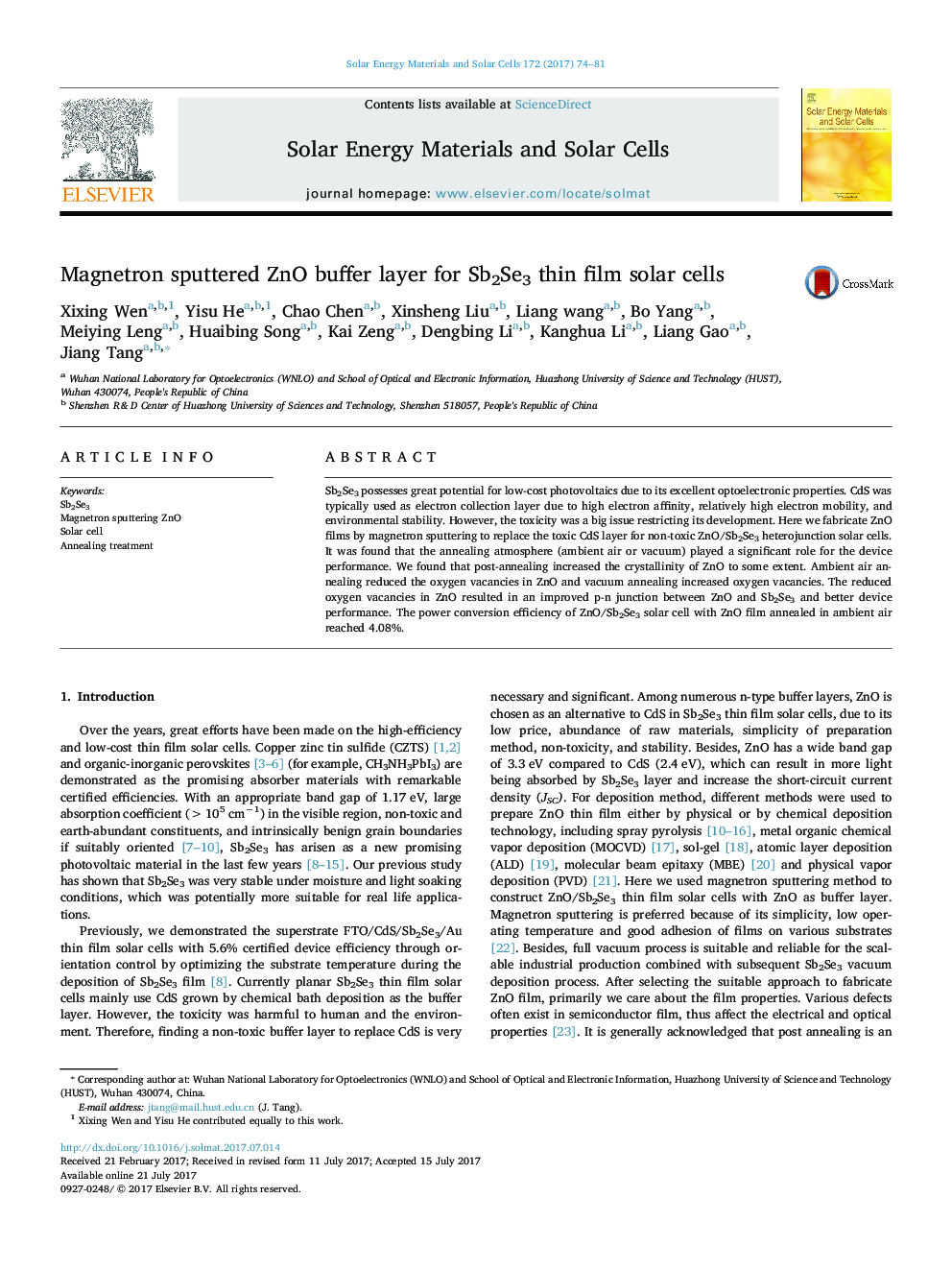| Article ID | Journal | Published Year | Pages | File Type |
|---|---|---|---|---|
| 6456876 | Solar Energy Materials and Solar Cells | 2017 | 8 Pages |
â¢Sb2Se3 thin film solar cell was first fabricated using full vacuum method.â¢A 4.08% ZnO/ Sb2Se3 efficiency was acquired.â¢Various ZnO annealing atmospheres affects subsequent defect densities.â¢Ambient annealing served as the optimal ZnO treatment.
Sb2Se3 possesses great potential for low-cost photovoltaics due to its excellent optoelectronic properties. CdS was typically used as electron collection layer due to high electron affinity, relatively high electron mobility, and environmental stability. However, the toxicity was a big issue restricting its development. Here we fabricate ZnO films by magnetron sputtering to replace the toxic CdS layer for non-toxic ZnO/Sb2Se3 heterojunction solar cells. It was found that the annealing atmosphere (ambient air or vacuum) played a significant role for the device performance. We found that post-annealing increased the crystallinity of ZnO to some extent. Ambient air annealing reduced the oxygen vacancies in ZnO and vacuum annealing increased oxygen vacancies. The reduced oxygen vacancies in ZnO resulted in an improved p-n junction between ZnO and Sb2Se3 and better device performance. The power conversion efficiency of ZnO/Sb2Se3 solar cell with ZnO film annealed in ambient air reached 4.08%.
